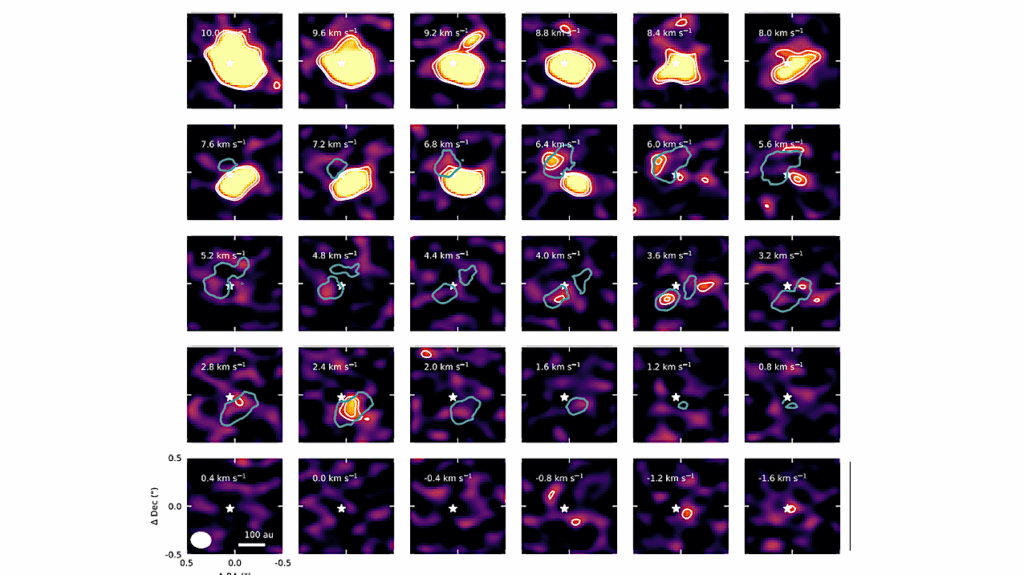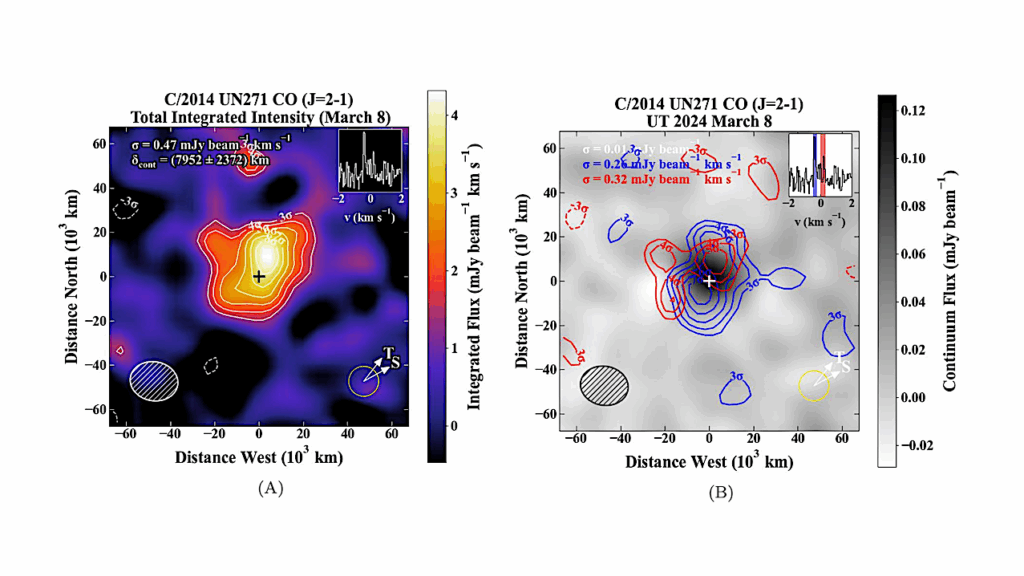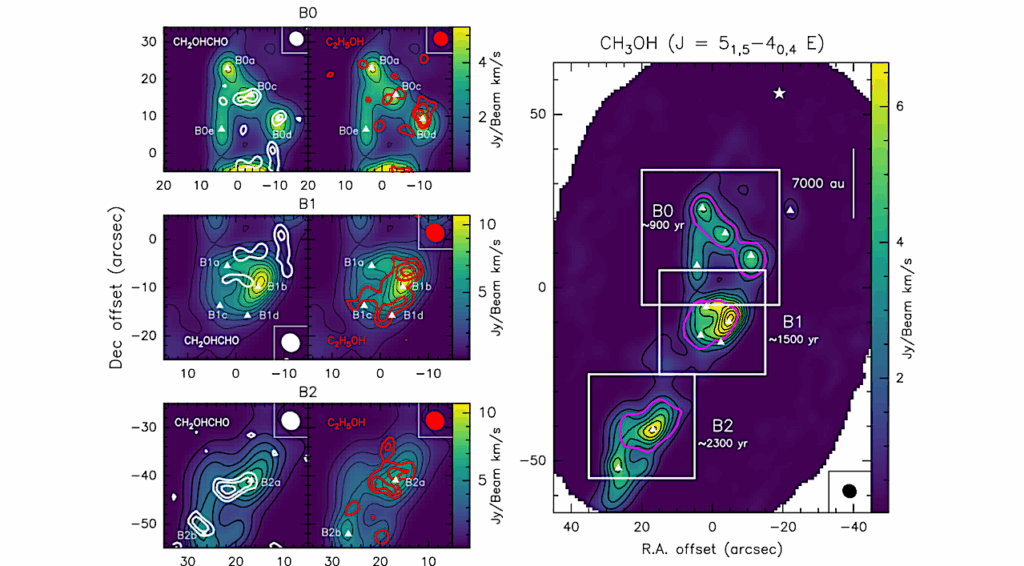Origin of the RNA World: The Fate of Nucleobases in Warm Little Ponds

Prior to the origin of simple cellular life, the building blocks of RNA (nucleotides) had to form and polymerize in favourable environments on the early Earth.
At this time, meteorites and interplanetary dust particles delivered organics such as nucleobases (the characteristic molecules of nucleotides) to warm little ponds whose wet-dry cycles promoted rapid polymerization.
We build a comprehensive numerical model for the evolution of nucleobases in warm little ponds leading to the emergence of the first nucleotides and RNA. We couple Earth’s early evolution with complex prebiotic chemistry in these environments. We find that RNA polymers must have emerged very quickly after the deposition of meteorites (< a few years). Their constituent nucleobases were primarily meteoritic in origin and not from interplanetary dust particles. Ponds appeared as continents rose out of the early global ocean but this increasing availability of "targets" for meteorites was offset by declining meteorite bombardment rates. Moreover, the rapid losses of nucleobases to pond seepage during wet periods, and to UV photodissociation during dry periods means that the synthesis of nucleotides and their polymerization into RNA occurred in just one to a few wet-dry cycles. Under these conditions, RNA polymers likely appeared prior to 4.17 billion years ago.
Significance: There are two competing hypotheses for the site at which an RNA world emerged: hydrothermal vents in the deep ocean and warm little ponds. Because the former lacks wet and dry cycles, which are well known to promote polymerization (in this case, of nucleotides into RNA), we construct a comprehensive model for the origin of RNA in the latter sites. Our model advances the story and timeline of the RNA world by constraining the source of biomolecules, the environmental conditions, the timescales of reaction, and the emergence of first RNA polymers.
Ben K. D. Pearce, Ralph E. Pudritz, Dmitry A. Semenov, Thomas K. Henning
(Submitted on 1 Oct 2017)
Comments: Published in PNAS, 24 pages, 16 figures, 4 tables
Subjects: Earth and Planetary Astrophysics (astro-ph.EP)
Cite as: arXiv:1710.00434 [astro-ph.EP] (or arXiv:1710.00434v1 [astro-ph.EP] for this version)
Submission history
From: Ben K. D. Pearce
[v1] Sun, 1 Oct 2017 23:20:33 GMT (5452kb,D)
https://arxiv.org/abs/1710.00434
Astrobiology








